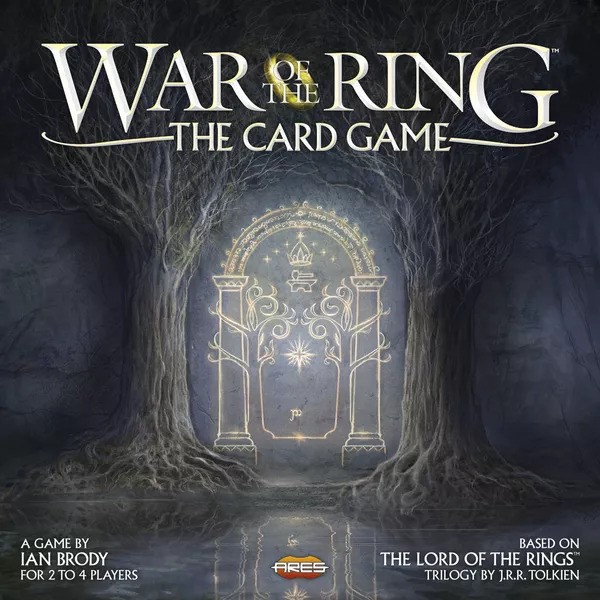This is a series of posts where I play 100 boardgames.

Game: War of the Ring: The Card Game
Designer: Ian Brody
Year: 2022
Country: Italy
Publisher: Ares Games
A competitive card game built around the Lord of the Rings trilogy, War of the Ring: The Card Game is also inspired by the War of the Ring boardgame. I originally intended to play this one only after I’d tried the boardgame, but the vagaries of availability and access made this today’s game.
War of the Ring: The Card Game is meant principally for four players, but it also contains rules for two and three player variants. I played it with two players, and while I think it was easier to learn like this, it probably reaches its full potential as a four player experience.
In the two player version, one controls the Free Peoples and the other the Shadow. There’s an asymmetric element to play, with small differences in how each side accumulates victory points and resolve combat. The Free Peoples are more often on the defense while the Shadow attacks.
The game lasts nine rounds, and for each there’s both a path and a battleground. These are location cards drawn from Lord of the Rings which help situate the action in terms of the story. Armies face each other on the battlegrounds and individual heroes and villains meet on the paths. This design choice obviously mirrors the structure of the books where Frodo and the Fellowship of the Ring try to fulfill their own mission while armies clash in the background.
Each player has a deck of appropriately themed cards. Playing Shadow, I had orcs, Saruman, the Mouth of Sauron and similar recognizable figures. You play cards onto the battleground and the path, seeking victory on both. There are limitations on which cards can be played where, so that sometimes luck gives you just what you need and sometimes not.
The battlegrounds are divided into two categories, one for the Free Peoples and one for Shadow. In our game, the home field advantage was decisive in almost every confrontation so that whoever got to defend would also win.
Many cards have additional effects keyed to particular locations, motivating you to play them in a story-appropriate fashion. I played Shelob in Shelob’s Lair, along with a bunch of Ringwraiths who just happened to be in my hand at the time.
During play, you’d both eliminate and cycle cards. Eliminated cards are removed from play altogether, but cycled cards go back into your deck once you’ve exhausted it. This means that there’s a tactical element in how to get rid of your cards, and when. For example, many cards were keyed to be used within a particular range of path encounters. If the card works for path encounters 1-3 and you’re already on encounter no. 8, you can safely eliminate it.
One aspect of the experience was that since you were constantly getting rid of cards in your card, you’d sometimes discard, or cycle, Saruman or the Lidless Eye. It felt vaguely sacrilegious but what can you do?